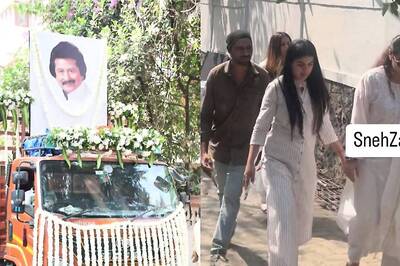
views
The death of the imperious Tamil Nadu chief minister Jayalalithaa will result in a queen-sized void in the state’s politics that’s likely to be filled by a succession of lesser individuals from her party or eventually by her bete noires on the other side of the Dravidian divide.
But this much is clear: For some time now, Dravidianism as an ideology that drove Tamil Nadu politics has been dead, and the narrative has moved on. Jaya’s successors over the years will wrestle with the humdrum issues of development and equality, unless some outrageous piece of bigotry by the Centre breathes brief life into the embers from decades gone by.
The letter D – for Dravida – is integral to Tamil party names, be it the AIADMK (Jayalalithaa, now Panneerselvam), DMK (Karunanidhi), MDMK (Vaiko), DMDK (Vijayakanth) or the hardcore DK (K Veeramani).
But now it’s just a slightly forlorn reminder of the movement started by the remarkable EV Ramasamy, or Periyar. Two individuals (MG Ramachandran and Jaya) who tried to squeeze the final drops of juice from the fruit that kept giving are dead; the third, M Karunanidhi, is a frail nonagenarian.
Some of the newer parties seem to have dispensed with Dravidianism altogether — Ramadoss’ PMK focuses on fighting for Vanniyars; the VCK stands for ‘liberation panthers” and the mildly fascist organisation of filmmaker Seeman prefers to tap into Tamil identity more directly.
The truth of the matter is that ideology has been driven to the sidelines in what was once a fiercely ideological state; politics has veered to a culture of giveaways that have ballooned the state deficit. What was once a proud fight against upper-caste dominance is more often a narrow battle between similarly backward castes.
The AIADMK and DMK, the mass-market inheritors of Periyar’s legacy used to stand for egalitarianism, land redistribution, opposition to Hindi and support for Lankan Tamils. Karunanidhi scion MK Stalin’s Namakku Naame movement in the recent state elections saw him shift to trendy T-shirt and jeans from the traditional veshti, a reminder that things have moved on.
Hindi is no longer a burning issue, thanks to the two inheritors allying at various stages with the Congress and BJP, to Bollywood and to an influx of northern workers. It remains to be seen whether the death of Jaya will return Vaiko, an icon of support for Lanka, to centrestage.
At its core, the Dravidian movement has run aground because it wasn’t really anti-caste; it was anti-Brahmin, not even anti-Brahminism. The Brahmins, who account for a mere 3% of the population but had cornered a wildly disproportionate share of influential jobs, have either shipped out or brought their famous survival skills to bear, aligning with power.
Indeed, in a state where atheism and religiosity have co-existed with a fair degree of comfort, it’s fairly obvious which side has won; a few decades of determined rationalism never had much chance against centuries of religious belief. Temples are packed and swamis and sants abound.
Make no mistake: Tamil Nadu has made good progress in distributing the fruits of prosperity. Tamil Nadu’s annual per capita income at current prices stands at Rs 143,457, nearly 75 percent greater than the national average of Rs 88,000; eight out of ten people are literate, good for a relatively large state; the gender ratio is well above the national average; health and other social indicators are satisfactory.
Arguably, the egalitarian aspect of many of these achievements may owe something to the Dravidian movement, but now it needs to be truly transformative, or to be replaced by a movement that is; it needs to carry with it the impoverished in every community. The state’s Dalits, for instance, have been left behind, and they constitute nearly 21% of the population of 72 million.
The party that gets its social engineering right — and with a long-term and truly egalitarian vision — has plenty to gain. The AIADMK is likely to suffer from a leadership vacuum or Jayalalithaa’s friend Sasikala pulling the levers of power; the DMK may sense a chance but needs to build leaders from outside the first family. The Congress is in a familiar state of disarray, a reflection of the stasis the party suffers from centrally.
Which leaves the BJP, of whose drive into Tamil Nadu much has been written and said. There’s precious little to show for it, though. Even if Dravidianism is dying, it’s difficult to see a polarizing Hindu-Hindi party taking its place. Expect instead the party to jockey for leverage over Jaya’s successors.
In fact, the party needs to tread carefully. Something like to opposition to Hindi can always be dusted off and rekindled by the Dravidian parties if someone in the Union Home or HRD ministries dreams up an impressive piece of northern bigotry.
Ironically, one hope for Dravidianism, or its successor movement, lies in a backlash to a monolithic and homogenous Hindutva from a state where Hinduism has never been under threat.




















Comments
0 comment